8 Best Companion Plants for Tulips (With Pictures)
-
Codee Chessher
- Last updated:

Tulips are an enduring classic in any flower bed, but they don’t bloom for very long. Judiciously using other flowers to brighten the garden before tulips bloom and when they’re fading is the key to effective gardening.
Let’s check out some of the most popular and beautiful companion plants for your tulips next season.
The 8 Best Companion Plants for Tulips
1. Crocus
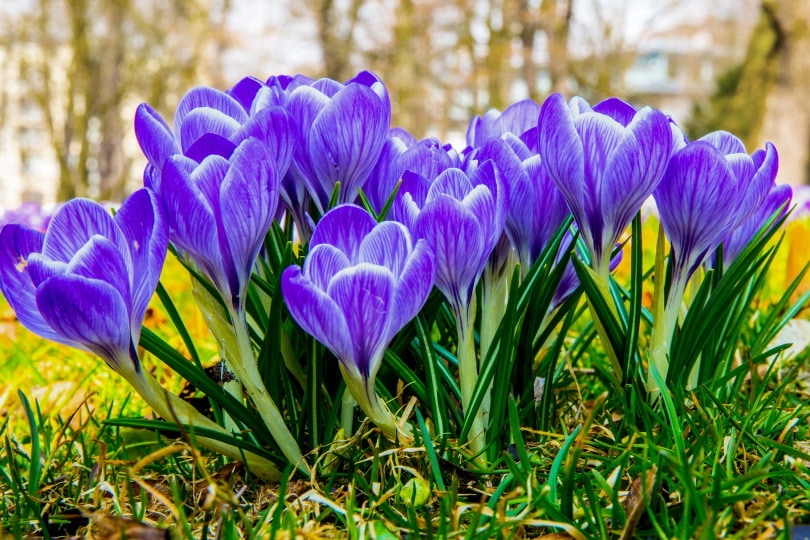
| Bloom time | Early spring |
| Height | 6 inches tall |
| Zones | 3–8 |
Crocuses are well-known for being early bloomers, with some blooming before spring has truly arrived. This is a great overlapping bloom period for your tulips, and their height is perfect too—crocus will sit comfortably right beside your tulips without stealing any of the spotlight or sunshine. Like tulips, they prefer full sun and don’t like soggy soil or wet feet.
2. Virginia Bluebells
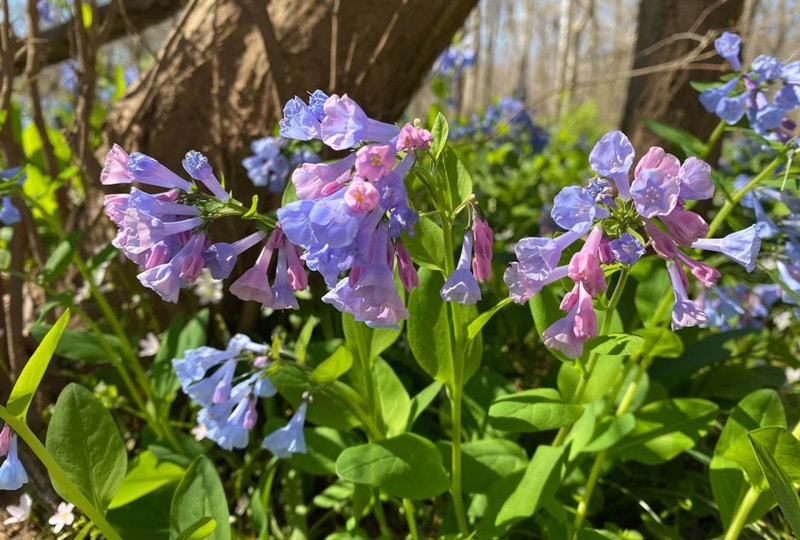
| Bloom time | Early spring |
| Height | 1-2 feet tall |
| Zones | 3–8 |
Virginia bluebells are similar to crocus in that they tend to bloom in early spring, but they’re a little bigger and sometimes bloom at the same time as tulips. This makes them a safe bet to mix with your tulips and get some variety in your springtime flower beds and bouquets.
As a bonus, bluebells die back in the summer and regrow the following spring. If you hate to reseed every season, they’re a great option for a colorful garden.
3. Grape Hyacinth
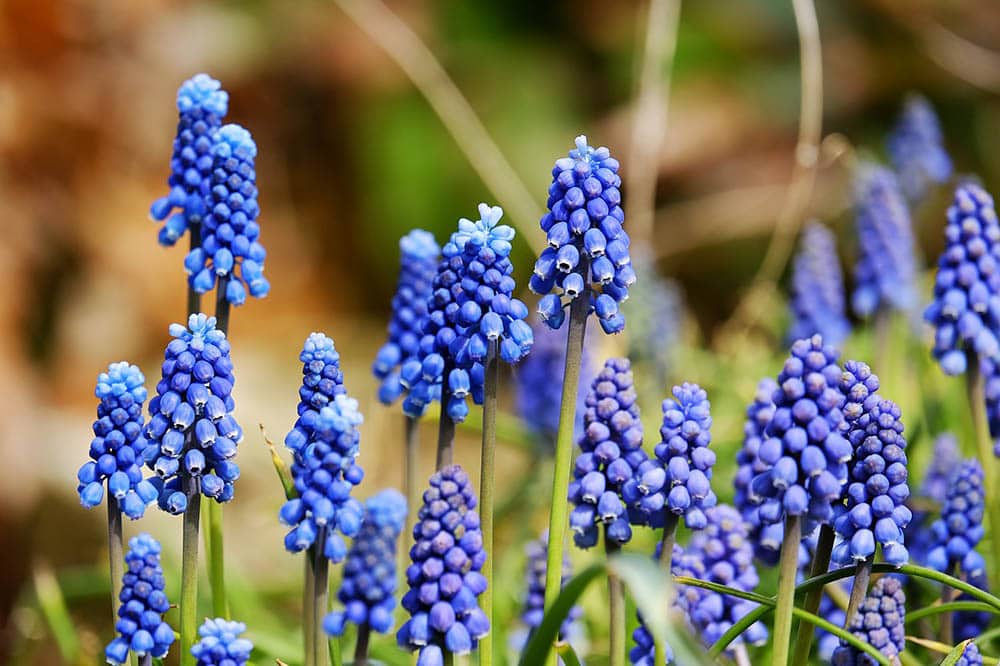
| Bloom time | Early spring |
| Height | 6–9 inches tall |
| Zones | 4–8 |
For a large flower bed, grape hyacinths are an ideal fast-spreading companion for tulips. The asparagus or grape-like clusters are at home next to beautiful tulips, crocus, or daffodils.
They’re fairly flexible and do well in box planters with tulips and other wildflowers, as long as you can meet their 10-week dormancy period.
4. Pansy
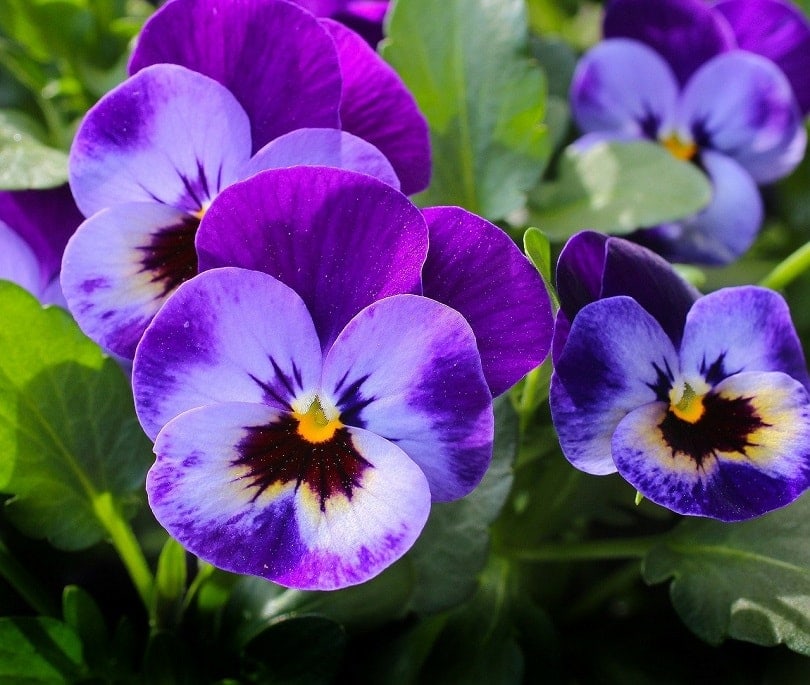
| Bloom time | Spring to early summer |
| Height | 6–9 inches |
| Zones | 2–9 |
With a pretty purple-and-yellow color scheme and a suitably complementary height, pansies are a suitable choice for growing alongside tulips. They’re very cold hardy, blooming in the spring to late summer. In mild climates, pansies will bloom all season. They’re most useful paired with tulips and other wildflowers in box planters, or you can use them as groundcover for your tulips and other flowers.
5. Daffodil
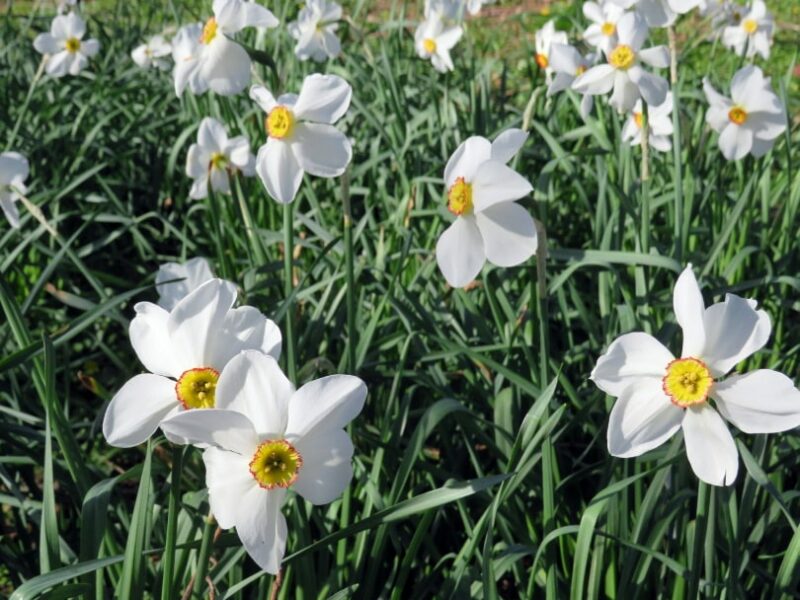
| Bloom time | Early spring |
| Height | 4–20 inches tall |
| Zones | 3–9 |
Cheery white and yellow daffodils are a fantastic complement to the more luscious purple and red tulips. They bloom around the same time and prefer moist but not soggy soil. They have dainty feet that don’t like getting wet either.
Daffodils are also easy to control because they spread by clumping. Grape hyacinth and other fast-spreading flowers freely reseed, but you don’t have to worry about out-of-control daffodils.
6. Shasta Daisy
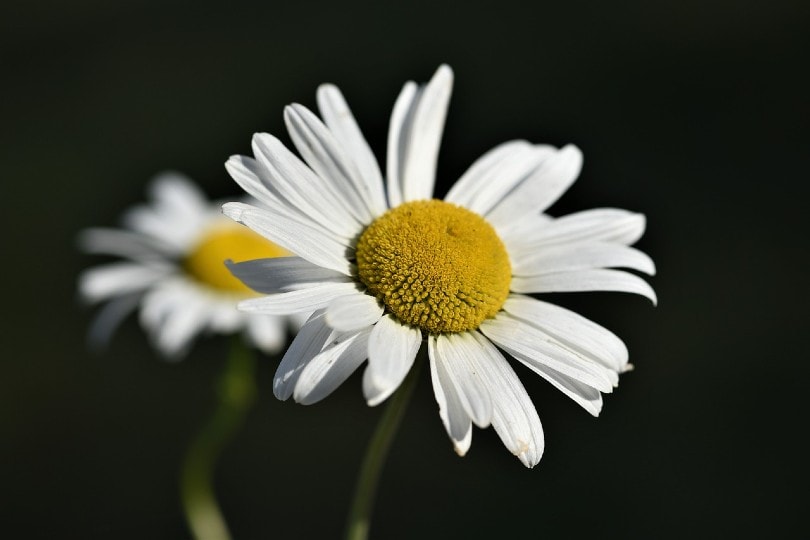
| Bloom time | Mid to late summer |
| Height | 9 inches to 3 feet tall |
| Zones | 5–9 |
Daisies and other sunflowers are great cover plants for when tulips are fading. Their tall height draws attention away from wilting, browning tulip leaves that you can’t cut off. The foliage fits in very well with dying tulips and then grows the trademark white and yellow daisy flower heads. Daisies also prefer well-draining soil like tulips.
7. Nasturtium
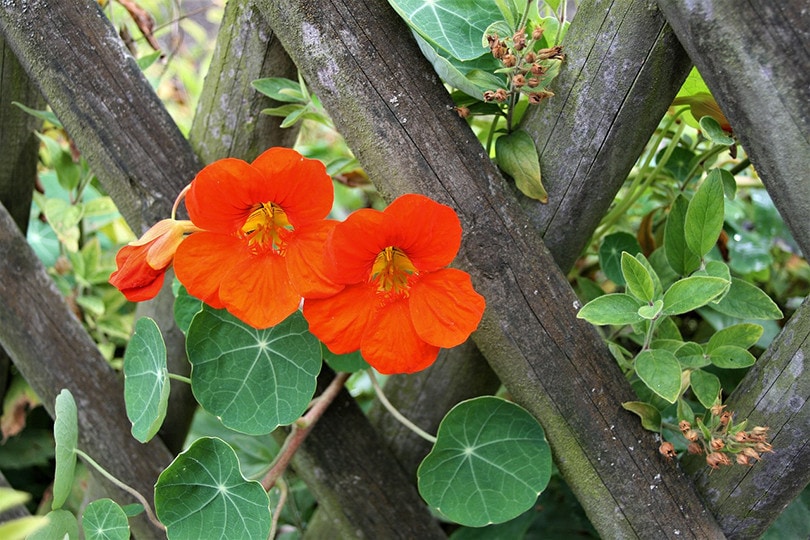
| Bloom time | Early summer to early fall |
| Height | 1–10 feet tall |
| Zones | 4–8 |
Nasturtium has a huge variety, from tiny 1-foot-tall plants that will mingle with dying tulips or larger trees that will effectively cover late and dying tulip foliage. As a bonus, nasturtium is known to repel dastardly aphids, which love tulips.
Nasturtium can usually last until the first frost of the year and come back when tulips are fading. Nasturtium is also edible and used as an alternative to watercress in salads.
8. Marigold

| Bloom time | Spring to early fall |
| Height | 4 inches to 4 feet tall |
| Zones | 2–11 |
Marigolds are an undemanding companion to tulips, with shallow roots and a love for full sun. They’re a striking, fiery complement to the more understated tulip. They persist longer than tulips and cover up fading tulip foliage very effectively with wide, fern-like foliage. African Marigolds are one of the best choices for pairing with tulips in the garden.
Worst Companions for Tulips
The most notable plants you should avoid planting near tulips are vegetables that you intend to eat. Tulips and daffodils contain alkaloid compounds that can cause serious side effects if consumed, and that goes for veggies planted nearby as well. Do yourself a favor and keep your vegetable garden completely separate from your flower beds.
Conclusion
Tulips are a brief but explosive perennial in the garden, and they need friends to truly shine beyond their brief blooming period. Try pairing them with some classic daisies, daffodils, or even freely seeding crocus to watch them thrive and transform your beds.
Featured Image Credit: StevanZZ, Shutterstock
Contents

